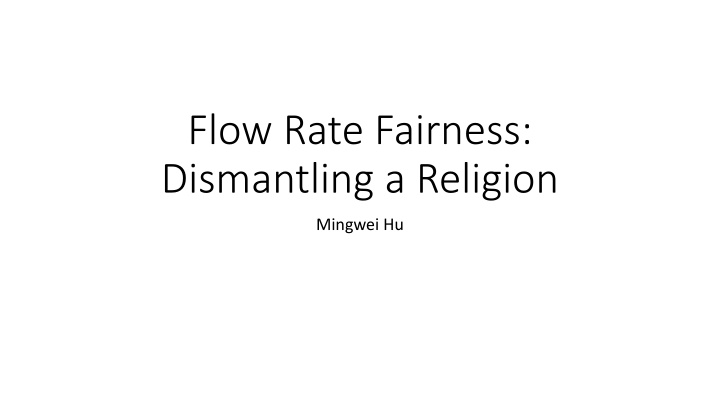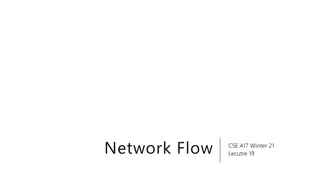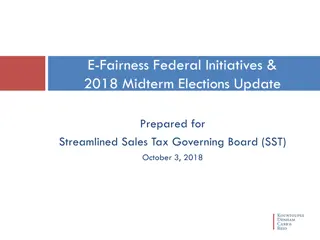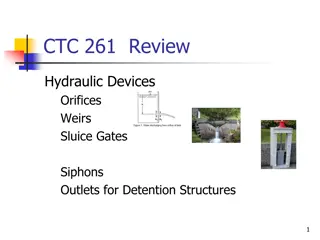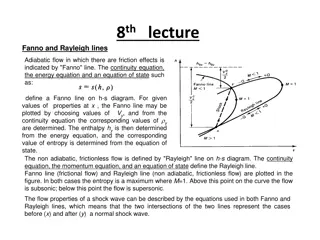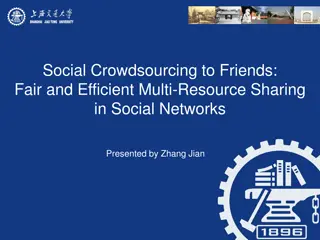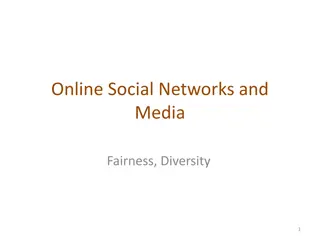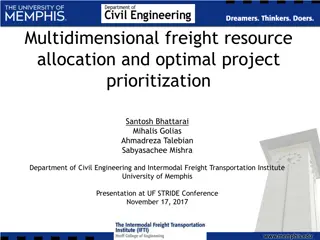Challenges of Flow Rate Fairness in Network Resource Allocation
Addressing the concept of flow rate fairness in network resource allocation, this content explores its limitations and challenges. Despite being a goal in protocols like TCP, the practicality and enforceability of flow rate fairness are questioned. It highlights the inadequacy of flow rate as a measure of fairness and the potential for manipulation in resource allocation systems. Ultimately, it concludes that real fairness in resource allocation involves considerations beyond flow rates alone.
Download Presentation

Please find below an Image/Link to download the presentation.
The content on the website is provided AS IS for your information and personal use only. It may not be sold, licensed, or shared on other websites without obtaining consent from the author.If you encounter any issues during the download, it is possible that the publisher has removed the file from their server.
You are allowed to download the files provided on this website for personal or commercial use, subject to the condition that they are used lawfully. All files are the property of their respective owners.
The content on the website is provided AS IS for your information and personal use only. It may not be sold, licensed, or shared on other websites without obtaining consent from the author.
E N D
Presentation Transcript
Flow Rate Fairness: Dismantling a Religion Mingwei Hu
Fairness criteria in network resource allocation How do we achieve fairness between multiplexed packets traffic ? By allocating rate among flows (flow rate fairness) Flow rate fairness has been the goal behind fair resource allocation in protocols like TCP, weighted fair queuing
Question 1. Do equal flow rates lead to real fairness ? 2. Is controlling relative flow rate alone a practical way ?
Unfortunately Flow rate fairness has no intellectual heritage from any concept of fairness in philosophy or social science ! Flow rate fairness is never substantiated and is a broken idea ! Resource allocation and accountability have never got solved A flow is merely an information transfer between two applications
What is real fairness Fair Benefit and Cost
Flow rate fairness cannot represent real fairness Flow rate is an inadequate measure for benefits: User benefit per bit rate can be orders of magnitude different for different types of flow: SMS and video Flow rate is not a sole measure for cost Cost is determined by both congestion volume and instantaneous flow rate
Flow rate fairness cannot enforce real fairness Flow rate fairness mechanism is open to cheating Customer with min-max flow rate allocation can split flow into multiple little flows until they are all less than min allocation System will reduce everyone else s allocation in order to increase all the allocation of the customer s little flows
So flow rate fairness is impractical and unrealistic . Solution: Cost Fairness Allocate congestion among the bits sent by economic entities
Cost Fairness Realistic resource allocation only needs to concern itself with cost As long as people cover the cost of their actions, it is generally considered fair enough Market adjusts supply to meet demand so that benefits are fairly distributed
Cost Fairness [Frank Kelly 1997]: cost fairness would lead everyone to maximize their combined aggregates utility across the whole Internet [Frank Kelly 1997]: weighted proportional fairness if each user keeps their utility function private but we assign each user by an arbitrary weight that scales their utility function, then users will allocate flow rates so that the cost = weight they choose
Cost Fairness-market economy Make people accountable for the cost of their action As everyone increases the rate of each of their flows, congestion rises. Network will charge everyone for the congestion they cause Result will be utility = benefit cost Each individual will want their congestion control algorithm to adjust its rate to maximize net utility
Cost Fairness-example TCP with weight parameters: User accountable for congestion they cause to other users Weight each individual flow according to weighted proportional fairness Meet underlining fairness criterion With flow rate fairness: Two flows may cause orders of magnitude different costs to others even if they are running at the same flow rate Not fair though equal flow rate
Cost Fairness-easy to enforce cost fairness ECN: Network operators mark traffic at congested routers without regards to flows. Apply a price to the volume of traffic carrying the mark Incur unpredictable price Re-ECN: add a network policer that limit the volume of congestion a customer s traffic causes. The policer can force the endpoint congestion control to act fairly. And Re-ECN communicates cost of congestions to each transport causing it
Discussion What security issues could be caused in Re-ECN when using a network policer to limit the volume of congestion? A provider can profit from faking higher congestion notification. How to prevent that?
